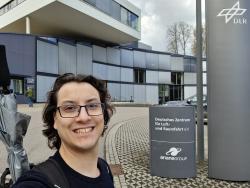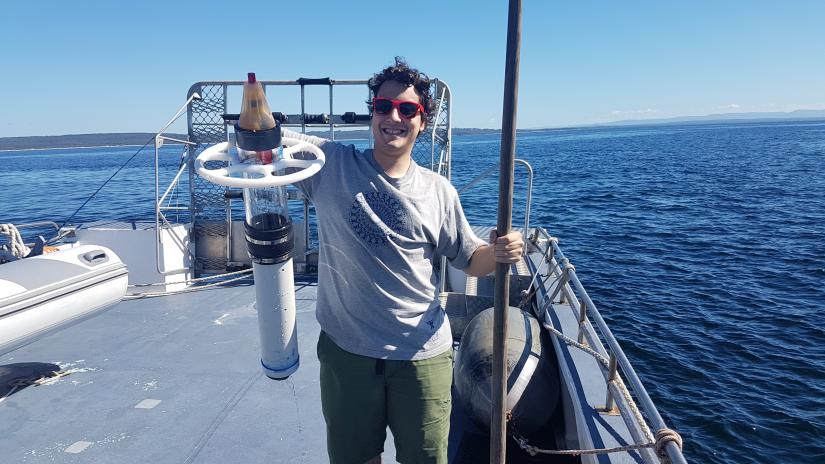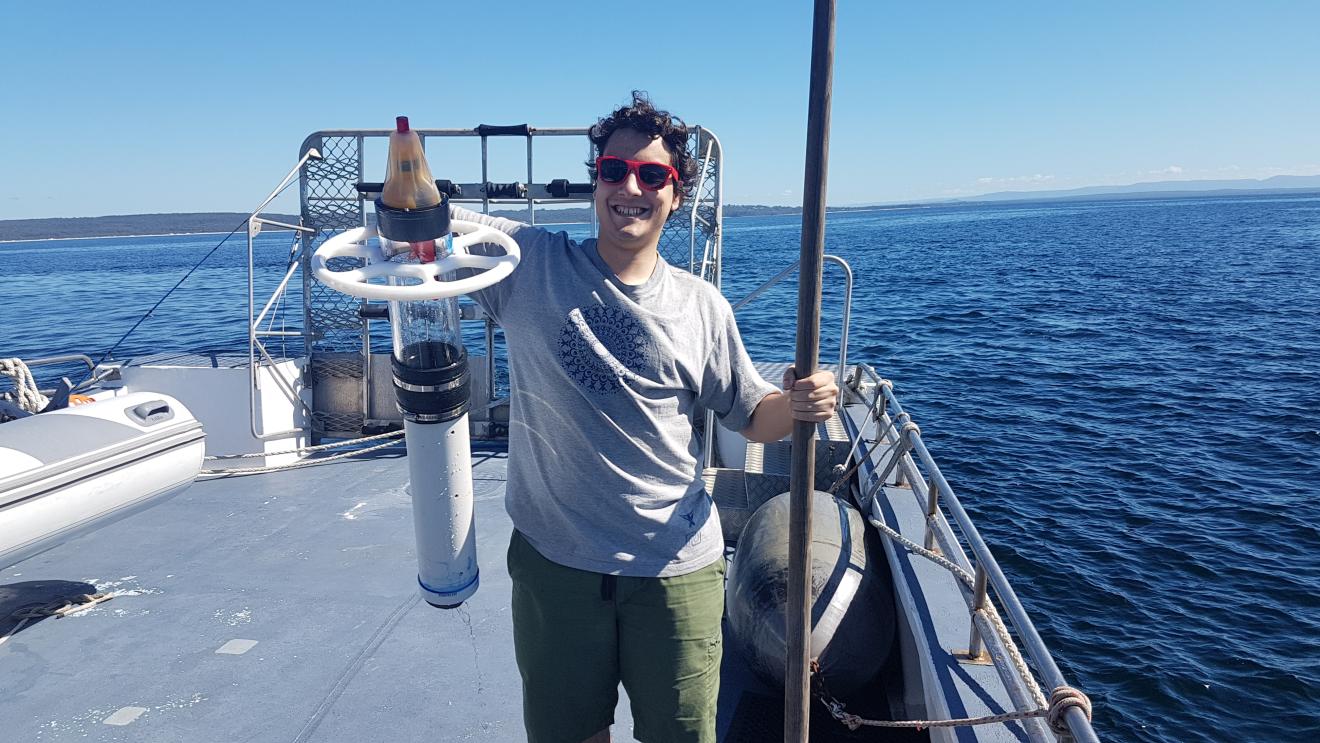Kamilaroi man Giovanni D’urso has crossed continents, industries and atmospheres to wrangle uncertainty in some of the most challenging situations. His PhD research proves that you can create real value in multiple industries while building critical academic research for the benefit of humankind.

It was a dream come true for Giovanni to intern at NASA’s Jet Propulsion Laboratory.
When Giovanni started his PhD, he was not expecting to apply his research at an internship with NASA’s Jet Propulsion Laboratory (JPL), or be sponsored by the newly established Australian space agency to work in the German space agency, Deutsches Zentrum für Luft- und Raumfahrt (DLR), helping them to develop their green energy initiative.
With a background in mechatronics and computer science, it wasn’t a stretch for Giovanni to intern in these space agencies. But for his inner child, it was a dream come true.
“Working in space in robotics has been something I wanted to do my whole life. Going to JPL was a humbling and daunting experience.
“I saw exact copies of the robots that were on Mars gathering samples. I was where the satellites that are orbiting Saturn were built.”
Despite gaining significant experience and skills in robotics and space during his PhD, Giovanni’s research isn’t limited to those disciplines. He’s also tested it on fieldwork across marine science, environmental monitoring, logistics and agriculture.
Research that wrangles uncertainty
“My work consists of two main components: dealing with uncertainty and dealing with the additional complexities of multiple agents.”
“When you have hard, noisy problems, you want some way of creating a little bit of certainty,” Giovanni explains.

“You can't remove uncertainty, and the decisions and plans you make are never certain. But we can make plans that put you in a better state to change if things are not how you expect.”
In addition to dealing with the difficulties of uncertainty, many real-world problems have multiple robots or people (agents) working together. Adding more agents to the problem allows more work to be done but introduces new problems such as coordination and communications.
Through his research, Giovanni has created a framework that considers multiple agents to plan complex projects. Organisations can dial up or down their risk appetite to make plans that will most likely get them to the outcome they want despite uncertainty. The result clears away noise and gives project leads the tools to make better plans.
Applying research to the real world
Giovanni’s research is particularly useful for highly complex projects with moving parts (like space exploration) and unpredictable situations (such as renewable energy).
In a space context, there’s little appetite for things to go wrong, which is where Giovanni’s framework can help to plan with more certainty:
“When you start moving further away from Earth it takes longer and longer to communicate with the robot. So, the further away we go, the more it pushes autonomy because you don't want to have a one-day round trip on a signal. NASA is very understandably restrictive and controlling and wants to move safely.”
While applying his research in the DLR’s green energy research initiative, he helped researchers to schedule when they can use wind energy to conduct their research.
“On a wind farm the wind is fickle. It blows what it wants to blow. It gives you power when it wants to give you power. So, if you're trying to take this power, produce hydrogen and do research with it, how do you know when you can do the research, given that the power production is sporadic?
“That’s where I come in. My research helps in the decision making and planning for systems under uncertainty.”

Applying research & PhD travels – Giovanni Durso travelled the globe as part of his PhD, interning at international organisations in marine science, agriculture, space and operations.
Research for social good
Before embarking on his PhD, Giovanni worked in logistics, helping global companies find the most efficient ways to pack, transport and deliver packages.
“When you work in industry, you get paid and start gaining experience straight away. You see the impact of your work a lot quicker,” he reflects.
“But when you solve a problem, the expertise stays in-house.
“In academia you solve the problem, it gets published, it gets disseminated, your learnings and your expertise ideally serve as the next steps for other people to build on.”
Recognising the value in each experience, Giovanni undertook PhD-specific internships and fieldwork during his studies allowing him to test his research on real-world problems.
“My main focus at the moment is to make my research meaningful. It’s important to me that my work goes towards something that benefits humankind.
“There's lots of ways of making positive impact. Each of the projects I've worked on are in different fields and they all have positive impacts like improving drainage research, oceanographic science, or operations.
“Being in environmental science is not necessarily the only way you can do positive good. Supporting fundamental research and science in general, has knock on effects in all these different fields.”
What impact do you want to make? Explore it with a research degree ->
-
Student


